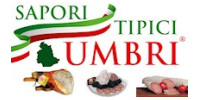The largest stretch of inland water in central Italy and the fourth largest lake in the country, Lake Trasimene covers a surface area of 128 square kilometres with a perimeter of 54 kilometres. Of tectonic origin, the lake’s waters are fairly shallow, never deeper than six metres in normal conditions, although due to its reliance on rainfall – no rivers or streams feed the lake – water levels vary considerably from year to year as well as seasonally. These variations in the depth of the waters of Lake Trasimene, which in years with particularly high rainfalls was prone to flooding, were already a problem in Roman times when a first artificial drainage canal was built. A second canal was built with the same purpose in the 15th century by Fortebraccio da Montone, although with equally poor results. It was not until the underground drainage canal built in the mid-19th century that the problem was finally solved.
For a number of years now the lake’s water level has been low, despite receiving water from a canal built to divert flow from the river Anguillara (which is in turn fed by the Tresa, Rio Maggiore, Moiano and Maranzano). A further canal at San Savino channels the lake’s waters into the Tiber.
Landscape
The lake is encircled almost completely by a natural curtain of rolling green hills, offering a soothing panorama with the highest peaks to the north standing at 800 metres above sea level. With the exception of two promontories at Castiglione del Lago and Monte del Lago, the lake’s shores run softly down to the water level. The overall shape of the lake is circular. Three islands emerge from the water at the centre of the lake: Polvese, Isola Maggiore and Isola Minore. Due to its proximity to the regional capital, Perugia, Lake Trasimene is frequently referred to as "il lago di Perugia", although to the northwest the lake borders with the Valdichiana basin of Tuscany. A total of five Comuni give onto the lake: Castiglione del Lago, Magione, Panicale, Passignano sul Trasimeno, Tuoro sul Trasimeno. All towns around Lake Trasimene are well equipped with tourist facilities as this is still a popular holiday destination during the summer months.
The natural environment
The large stretch of water that makes up Lake Trasimene supports a precious ecosystem, rich in biodiversity both of animal and plant life. Extensive colonies of juncus border the lake’s shores, which present typical freshwater marshy plant life. This is particularly luxuriant at the Oasi La Valle, which is also an important resting place for migratory birds. The surrounding hills are covered in ilex and oak forests, while the lake’s waters are rich in fish.
Our network:
Wednesday 20 November 2024
Lake TrasimeneAll'inizio |

| THEMATIC HOLIDAYS | go |
• Ancient documents and illuminated manuscripts
• Renaissance Umbria
• Umbria the Poet’s Muse
• Umbria With the Kids: Perugia’s Città della Domenica
• Golf & Art in Umbria
| WINE AND FOOD | go |
• Typical Umbrian dishes
• Umbrian cuisine
• Typical Umbrian produce, where to buy and where to taste
• Typical Umbrian food
• Wine Tours in Umbria
• Umbrian Wines and Regional Wine Trails
• Enoteche, vinerie and wine bars in Umbria
• Umbrian Wines
• Wineries and wine tasting in Umbria
| ITINERARIES | go |
• Contemporary art in Umbria
• The female saints of Umbria
• Benedictine monasteries
• Ancient castles and fortresses
• Guided tours and itineraries in Umbria

| PARKS AND NATURE RESERVES | go |
• Lake Trasimene
• Parco Fluviale del Tevere
• Parco Regionale del Lago Trasimeno
• Parco Regionale del Monte Subasio
| WHAT TO SEE & DO | go |
• Cooking courses in Umbria
• The Nahar adventure park, enclosed within one of Italy 's largest alpaca farming areas, offers tourists the chance to spend a day experimenting new sports and generally having a good deal of fun in an unparalleled natural setting!
• PIERMATTEO D’AMELIA and the Renaissance in Southern Umbria
• FRANTOI APERTI Following the DOP Umbria quality olive oil trail
• Wedding in Umbria
• MAP of UMBRIA to travel in Umbria
• Tourist guides of Umbria
• Quality produce - sustainable success stories
• Oil mills and producers across the region Umbria
• Academies, Schools in Umbria and Italy
• Exhibition Perugino, divine painter
• Itineraries & Packages
Booking.com
• Beauty Farms in Umbria
• Wellness in Umbria: opportunities for tourists
• Spiritual Retreats in Umbria
• Dermocosmetici Oro of Spello for protecting your skin
• Wellness in Umbria
• Rafting
• Paragliding and Hang-Gliding
• Horse Riding in Umbria
• Golf in Umbria
• Umbria by Bike
• Getting married in Umbria
• SM.MA. rental of equipment, marquees and gazebos for catering and banqueting
• Company meetings in Umbria
• Venues and Entertainers for Events in Umbria
• San Gemini - Centro Congressi
• Park Hotel ai Cappuccini in Gubbio
• Events and Cerimonies in Umbria – Deals and Offers
• Conferences and Conventions – the Advantages of Choosing Umbria

• Textiles and Lace-Making in Umbria
• Deruta Ceramics
• Cabinetmaking in Città di Castello
• Woodcarving in Umbria
• Ceramics in Umbria Art and Tradition
• The Ceramics of Deruta

| BEAUTY & WELLNESS | go |
• Wellness in Umbria: opportunities for tourists
• Spiritual Retreats in Umbria
• Dermocosmetici Oro of Spello for protecting your skin
• Wellness in Umbria
| SPORT | go |
• Paragliding and Hang-Gliding
• Horse Riding in Umbria
• Golf in Umbria
• Umbria by Bike
| WEDDING | go |
| MICE (MEETING INCENTIVES CONFERENCES EVENTS) | go |
• Company meetings in Umbria
• Venues and Entertainers for Events in Umbria
• San Gemini - Centro Congressi
• Park Hotel ai Cappuccini in Gubbio
• Events and Cerimonies in Umbria – Deals and Offers
• Conferences and Conventions – the Advantages of Choosing Umbria

| HANDICRAFT | go |
• Deruta Ceramics
• Cabinetmaking in Città di Castello
• Woodcarving in Umbria
• Ceramics in Umbria Art and Tradition
• The Ceramics of Deruta









